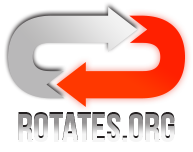February 21, 2013 - UI and the lobby
I’ve spent the last two months refactoring a lot of code, tidying up and making everything more manageable. I’ve also spent the time working on implementing a Feathers-based GUI so that the game works more like a game should (i.e. with an opening screen, the ability to select which game you want to play and so on).
I won’t lie, Feathers has been difficult to get my head around – it seems to be an excellent library once you’ve sussed it out, but it’s not well documented (relying mainly on examples rather than proper documentation, and leaving you to even look at the library’s code itself to figure some things out) and took me a long time to get comfortable with. The upshot is I now have a very nice, fast, flexible native-feeling interface to Archaos which will work the same on all platforms.
You can see a short video of me demonstrating it on my desktop below – and you’ll just have to take my word for it that it works just as well on a mobile device 😉
None of what you see here is mocked up – the games you’ve joined or created are being retrieved from the server, and their details are being displayed. The isometric mini-map shows a real-time view of the game, and will update even while you view it from the lobby.
More features will need to be added to make the lobby fully featured, such as an interface that allows you to add friends (and so see their newly created games and join them), the ability to sort and filter the games by various criteria and of course the ‘create new game’ screen itself, where you’ll be able to set things such as the board size, maximum number of players, round/turn lengths and so on.
One last thing – I had a discussion with one of my friends about Archaos and realised that the words I was using to describe various things didn’t make sense. Because of this conversation I’ve settled on the following:
- Board: The rectangular grid upon which the game is played.
- Unit: A piece on the board, be it a wizard, wall, creature or corpse.
- Turn: An individual player’s ‘go’ – i.e. selecting a spell, casting a spell or moving his/her units.
- Phase: The three distinct gameplay segments, consisting of spell selection, spell casting and unit movement. Technically a fourth non-playable phase happens after spell casting and before unit movement, in which gooey blobs and magic fire spread, magic wood and castles/citadels may disappear and so on. Other phases may be introduced with new game modes.
- Round: One set of phases, beginning in Classic mode with spell selection, and ending after the last player’s turn in the unit movement phase.
This means that each round has several phases, and within each phase each active player has a turn. Not all phases force the players to take turns one after the other – the spell selection phase will allow all players to select their spells together, and the phase will only end when either all of the players have selected a spell (or cancelled) or the time runs out for that phase. The spell casting and movement phases that follow will work as normal, with every player taking their turn one after another in the correct order. Timers here will work on an individual’s turn, so each player will have (for instance) five minutes to cast their spell, before the game cancels their turn and moves on to the next player. The same goes for the movement phase’s turns. All of this will of course be configurable upon creation of a new game.




